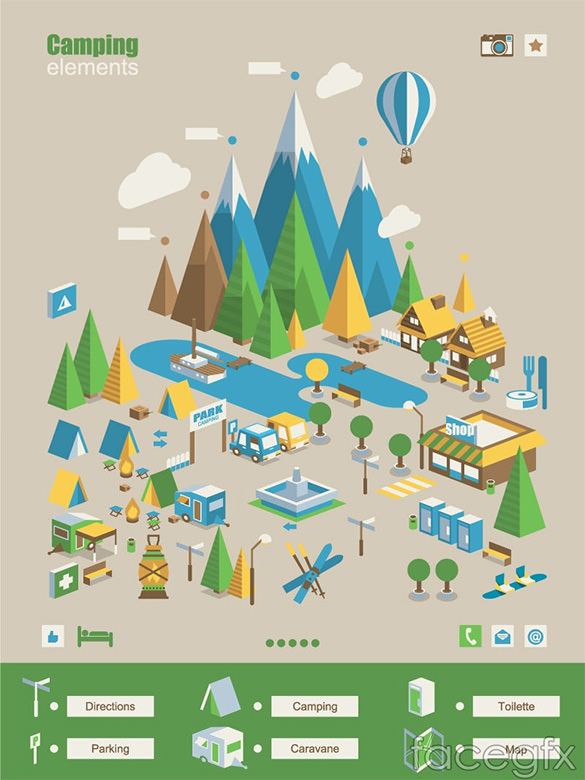Use These Tips To Explore The Treasures Of Camping Tents Product Sales
Use These Tips To Explore The Treasures Of Camping Tents Product Sales
Blog Article
Does Your Backpacking Camping Tent Need a Footprint?
A footprint is costly and adds extra weight to your backpack. It likewise isn't especially durable.
Where do you put a tent on a backpack?
Ultimately, whether or not a camping tent footprint is needed depends upon where and how frequently you're camping. In general, it's a good idea to make use of one if you camp on unpleasant surface areas or in damp problems.
Camping Tents with Reduced Deniers and Water Resistant Scores
Tents with lower deniers and waterproof ratings tend to be lighter, yet they can additionally be extra breakable. They might need even more regular repair work and have less interior room than harder designs. If you're a laid-back backpacker who suches as to take a trip quick and light, this might be fine; nonetheless, even more seasoned walkers understand that sacrificing resilience can come with large effects down the path.
The denier and waterproof rating of an outdoor tents's cover, rainfly, and flooring can help you establish its livability. Seek higher-denier textiles on the canopy and rainfly, as well as taped seams that help avoid water from permeating via stitches. Some makers even use heat and sealer throughout building to produce a stronger joint; these are called bonded seams.
The livability of a tent can additionally be identified by its floor dimensions and ability. An outdoor tents's floor should be a little smaller sized than the footprint to prevent water from pooling under the sanctuary.
Camping Tents in Rough Terrain
Many backpacking outdoors tents include an impact created particularly for their version, which assists ensure a correct fit and safeguards the outdoor tents's base from wetness and sharp things. Various other producers market global footprints that can be reduced or folded to match a tent's dimensions.
The sort of terrain you'll encounter is an additional essential consideration for picking a camping tent. For instance, if you'll be camping in a canyon or gully, seek a sanctuary that can deal with strong winds. These problems create disturbance that can make the distinction between appreciating your campground or suffering pain.
The capability and top elevation of an outdoor tents give you a good concept of its livability, but added aspects to consider consist of vestibules (the section of the rainfly covering the doors) and total storage room. For example, throughout our winter season testing of the Marmot Tungsten, its charitable 93-by-82-inch floor conveniently dealt with four perspiring backpackers and their puffier shoulder season resting bags while still leaving sufficient area for gear and individuals.
Camping Tents in Damp Issues
Even if your tent shows up dry, moisture hides in the spaces and crannies. Gradually, it can degrade the textile. That's why it's so essential to take advantage of day of rest to deep-clean your tent and its parts, such as zipper linings, risk loops and flexible webbing straps.
Additionally, ensure to pitch your tent in a level area, not a divot or concave area, to make sure that ground water doesn't collect in between the outdoor tents floor and impact or tarp. And if you're utilizing a footprint, take into consideration a custom-cut one designed for your camping tent's floor plan. It won't collect rainwater the means a generic ground cloth or tarpaulin can.
Technique setting up and removing your tent at home before you hit the trail, to get a feel for how quickly and efficiently you can do it. Also, practice staking out your tent in different terrains to see how easy it is (or isn't) to do in bad weather conditions.
Tents in High-Rise Situations
Outdoors tents vary in flooring dimension and livability. For instance, a big camping tent with double doors and vestibules like Marmot's Tungsten can deal with four backpackers without requiring gymnastics to get in and out or to save equipment.
The minimal path weight spec is the very best spec to compare models, as it consists of the bare basics: outdoor tents body, rainfly and posts. However remember that the spec omits outdoor tents stakes, person lines and things wall tent stoves sacks.
Most backpacking camping tents can stand up to a light summer storm, however some can be swept away by gale-force gusts. Seek a model with strong posts, an elevated bathtub-style floor and seam taping to minimize the opportunity of water seeping through. More expensive layouts additionally tend to feature stronger products that can stand up to the impact of debris and other forces.
How often should you waterproof a canvas tent?
